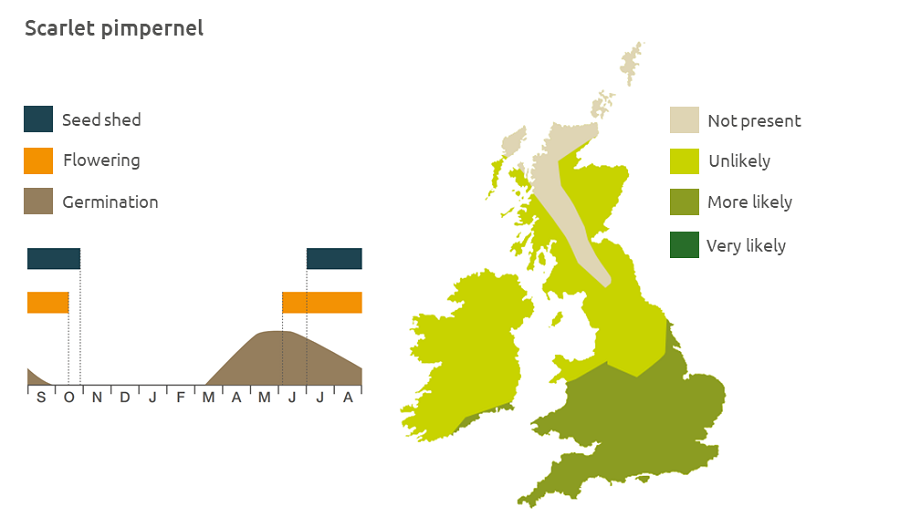- Home
- Knowledge library
- Distribution and biology of scarlet pimpernel in the UK
Distribution and biology of scarlet pimpernel in the UK
Scarlet pimpernel is a common broad-leaved weed of spring-sown crops. Find out how to identify and control it.
Overview
Scarlet pimpernel (Anagallis arvensis) occurs frequently in spring-sown crops. Seed is widely dispersed as a result of agricultural management, particularly as a contaminant of crop seed. Scarlet pimpernel is often associated with rarer arable weeds. Plants regenerate by seed which requires light for germination. Plants can overwinter and summer-shed seeds can give rise to a second generation.
Description
It is a slender, hairless annual dicotyledon with prostrate, sprawling or upright four-angled stems, 5–50 cm long. The flowers are bright scarlet. There is a rare form of scarlet pimpernel with bright blue flowers.
Key features
Young plant/plant: There are tiny brown dots on the undersides of the leaves. All parts are poisonous to poultry and stock.
Flowers: The flowers tend to open in full sunlight and remain closed on dull or rainy days.
Lookalikes
Scarlet pimpernel may be confused with common chickweed: the seedlings are similar but chickweed seedlings have a long hypocotyl. The leaves of chickweed have hairy stalks and are light green, while the underside of scarlet pimpernel leaves is spotted.

Location and life cycle

Geographic distribution
Scarlet pimpernel is a common annual weed of cultivated and waste ground with a widespread distribution in arable soils and some semi-natural habitats. The blue form prefers south-facing slopes.
Soil type
It grows in many soil types with neutral pH in partial shade to sun.
Seed statistics
- Seed longevity: >5 years
- Seed weight: 0.5 mg
- Seeds/flower: 12–45
- Seeds/plant: 100–12,000
Management
Control by using a stale seedbed.
For advice on herbicides, please speak with your agronomist or adviser.
When was this information last updated?
This page is based on content from the encyclopaedia of arable weeds publication. Since it was first released in 2008, the publication has been redesigned several times but not revised. However, it remains a good foundation for general information on the distribution and biology of weeds.

